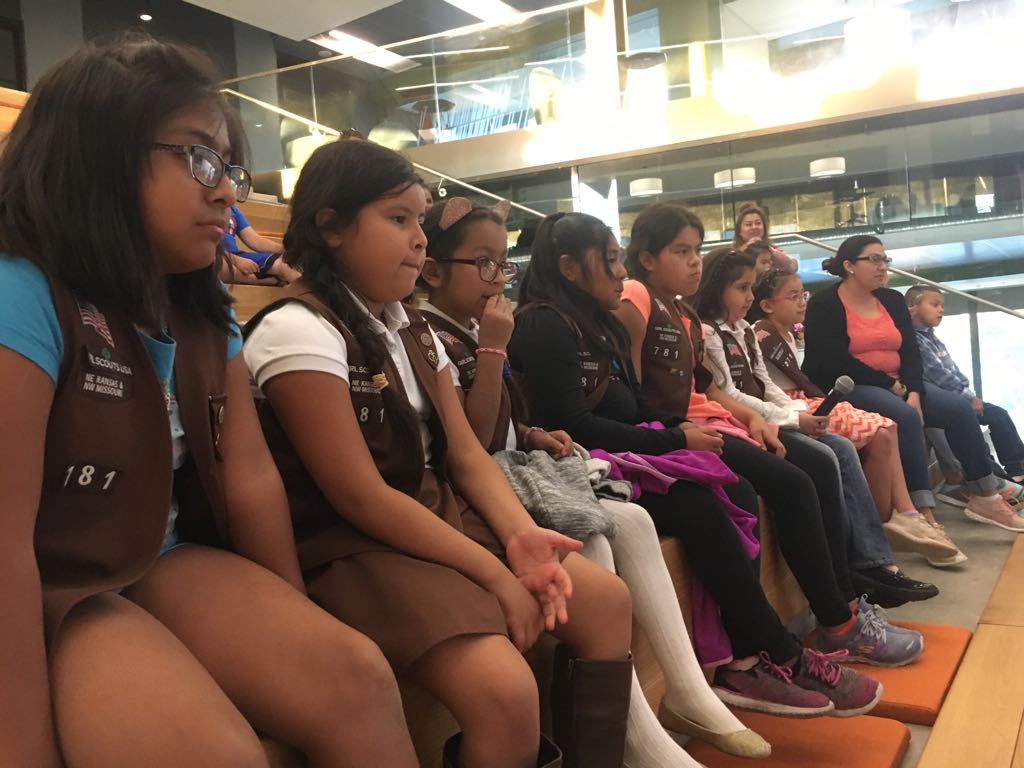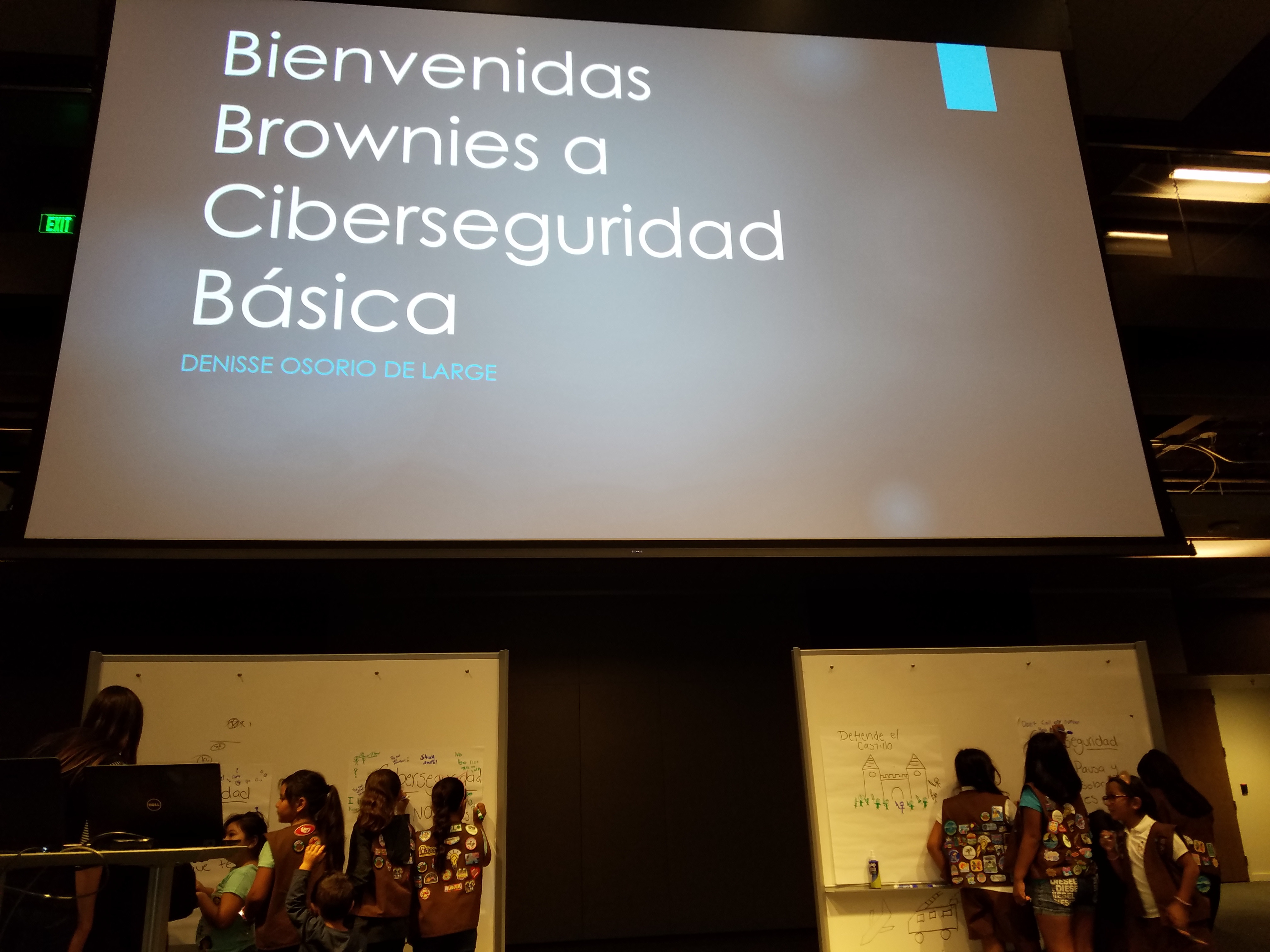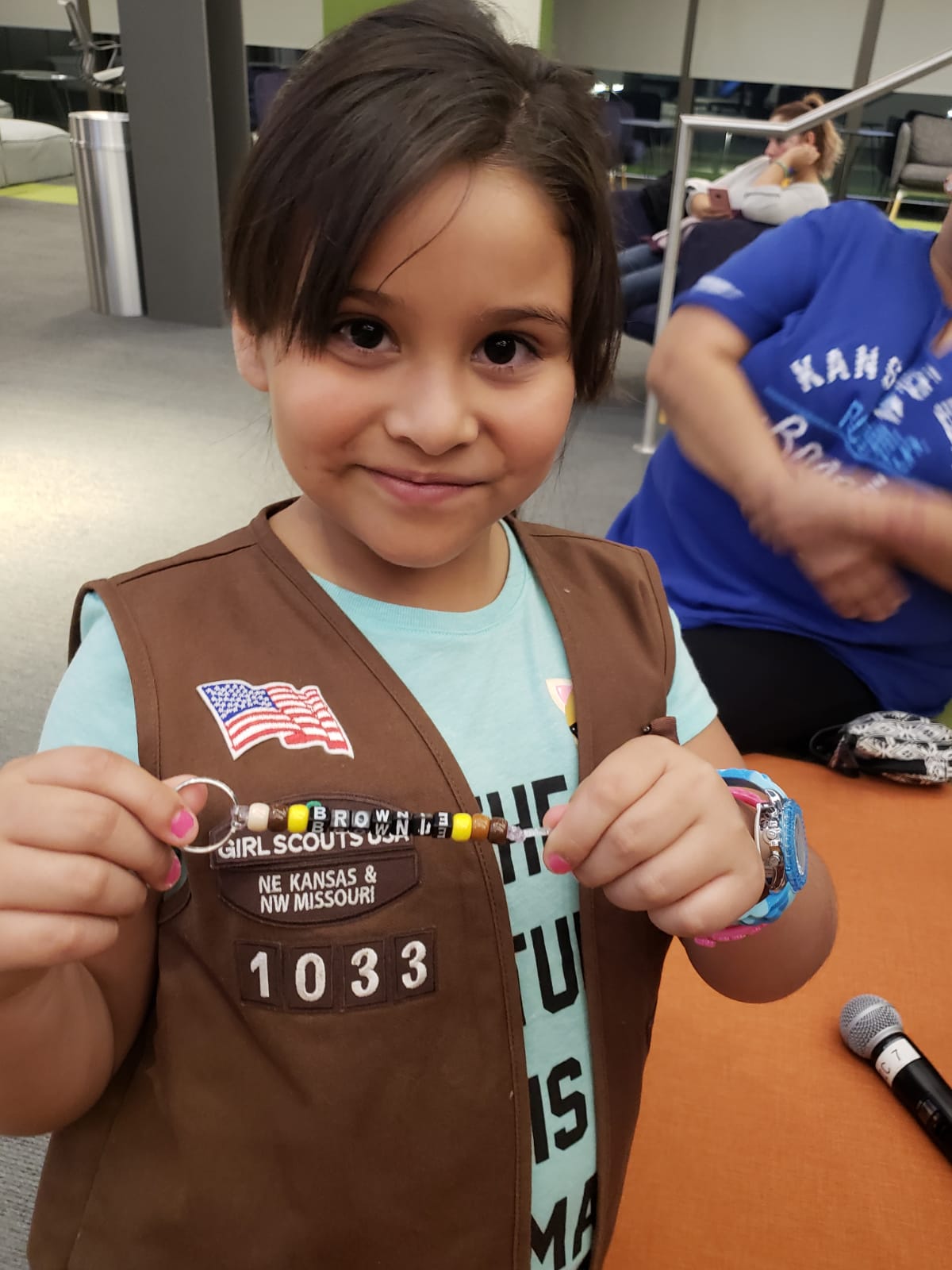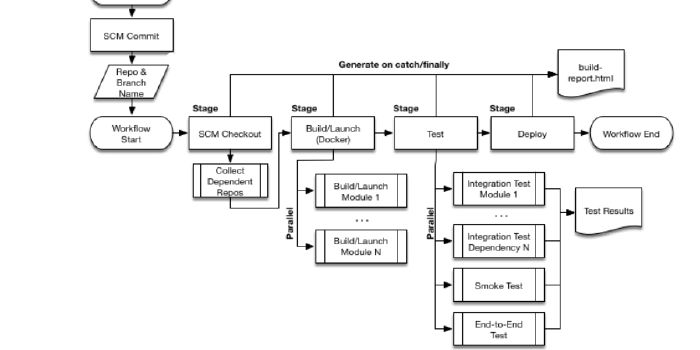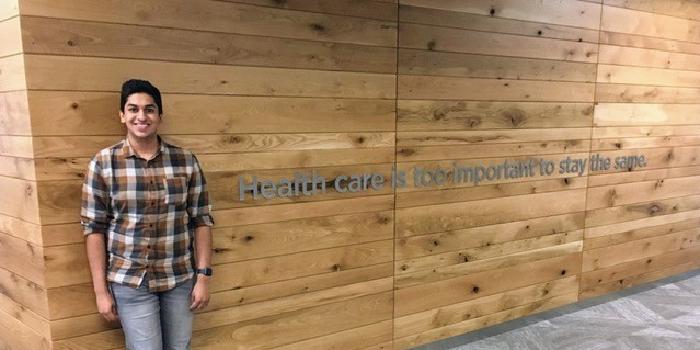Girl Scouts earn Cybersecurity Badge at Cerner
As a software engineering executive from Colombia, I thought that the best way to honor Hispanic Heritage Month (September 15-October 15) was to help the local Girl Scout Hispanic troops earn one of the new cybersecurity badges. October is Cybersecurity Awareness Month, having the activities nearing October seemed very fitting.
Girl Scouts has been focusing on STEM badges for all ages with several new initiatives in the past couple of years. The cybersecurity badges are some of the latest additions to the growing list of STEM badges that girls can earn. I was excited to help the troops earn their badge and I wanted to make it very special and appealing to these girls, so I decided to run the event entirely in Spanish. I thought that this approach would be a great way not only to engage the girls, but also their family members who often accompany them to the events.
The badge was designed to be very interactive and engaging. The first activity was a game that helped the girls think about all the different kinds of electronic devices that exist, such as Fitbits, iPads, cell phones, TVs, etc, and how they interact with them in their daily life. The activity then focused on how security in everyday life can translate to security in cyberspace.
The next part of the event focused on helping the girls understand how much of our life is connected to the internet and how different our life would be if it wasn’t so. The girls had fun describing how they would live without internet. They all agreed that life without internet would be challenging but they would still be able to read and go camping!
To help illustrate the concept of how layers of security are important, the girls drew on whiteboards how they could defend a castle. The girls were quite inventive on this interactive activity!
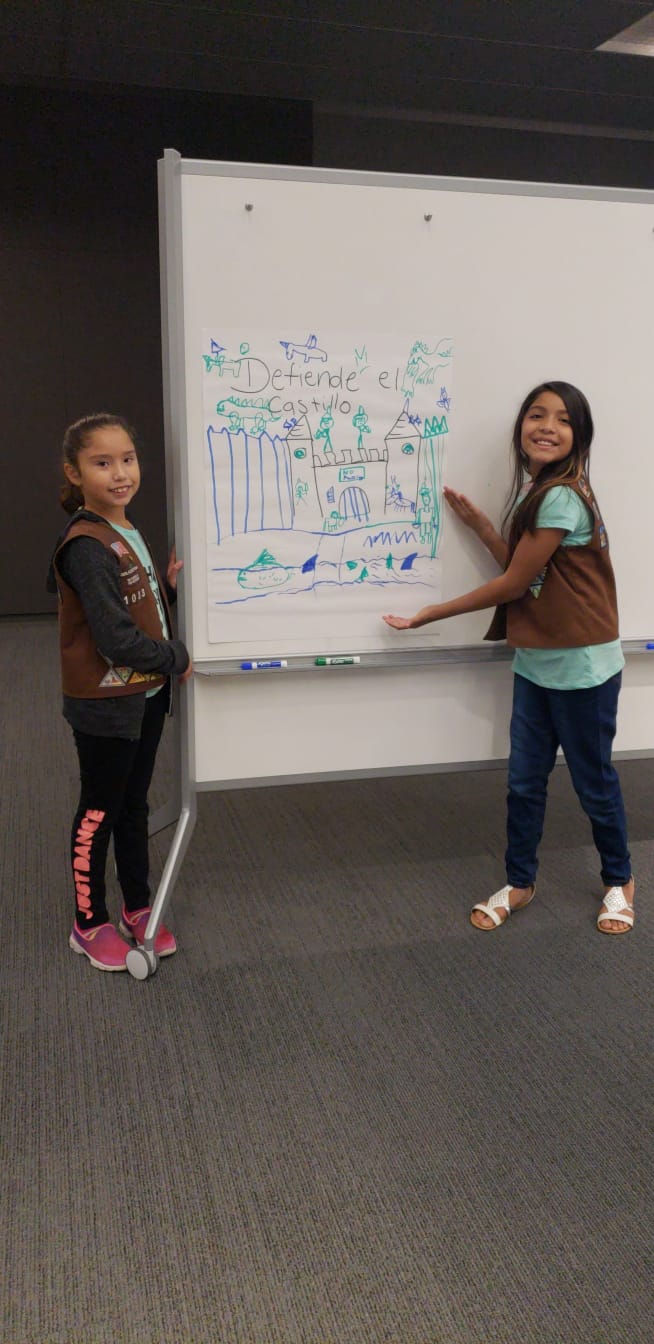
One of the most technologically advanced castles included dragons, a force-field and a keypad for the password.
The subsequent area of emphasis was regarding how electronic devices communicate. It was interesting to break down networking concepts like TCP/IP, network topology, and firewalls to a group of 1st and 2nd graders, but I made these concepts relatable. IP packets were explained by building key chains using beads that spelled “brownies.” The activity involved the girls acting as senders, messengers and receivers, along with individual beads acting as packets with headers, contents, and other metadata.
Safety rules were an integral part of the badge; the Brownies formed groups and made posters to help others understand the importance of the following internet rules:
- Don’t talk to strangers
- Stop and think before you act
- Don’t believe everything that you see or everything that people say
We wrapped up by touring our Innovations campus and highlighting how technology helps us improve our health and the health of our communities. Overall, this was another phenomenal opportunity for the Girl Scouts to engage with Cerner. It exposed them to key technology concepts and it expanded the prevalence of STEM education throughout the community.
To see more about Denisse’s involvement in the Hispanic Girl Scout community, check out this blog from 2017. Denisse has played a vital role in bringing STEM opportunities to the local troops. In fact, she was recently recognized by the Hispanic Chamber of Commerce of Greater Kansas City for her philanthropic efforts by receiving the STEM and Education Nuestra Latina 2018 Award. Congratulations, Denisse!
